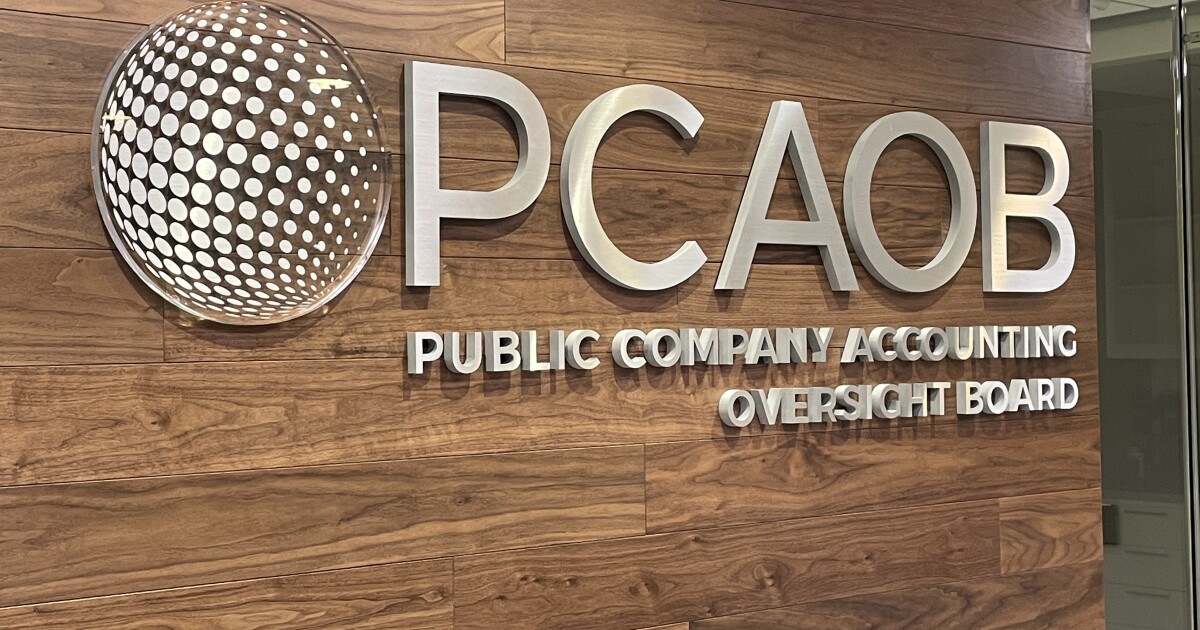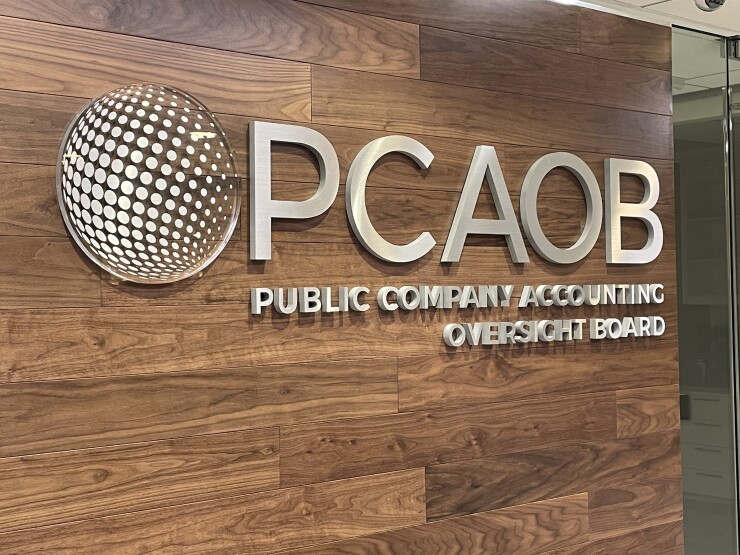Enforcement by the Public Company Accounting Oversight Board against auditors in 2024 is off to its fastest start in recent years, according to a new report.
The report, released last week by the Brattle Group, found that under PCAOB chair Erica Williams’ leadership, the PCAOB has already brought more actions — 34 actions against 45 respondents — in the first six months of this year than each year under its previous leadership in 2018–2021.
In comparison, through June of last year, the PCAOB brought seven enforcement matters involving nine respondents (three individuals and six firms). Twenty of the 34 actions (59%) brought by the PCAOB during the first half of 2024 involved U.S. respondents (12 individuals and 15 firms). In the 14 actions involving non-U.S. respondents in the first half of 2024, eight individual respondents and 10 firms were charged. Approximately 30% of PCAOB actions disclosed in the first half of 2024 involved respondents associated with the six largest global networks. More than half of the actions involving firm respondents in the first half of 2024 alleged violations related to firms’ systems of quality control.
In contrast, SEC activity through the first half of 2024 is at its lowest levels in recent years. The SEC initiated three actions in the first half of 2024 involving four respondents (two individuals and two firms). In comparison, in the first half of 2018, the year with the highest H1 activity in the analysis’s sample, the SEC initiated 13 actions involving 17 respondents (nine individuals and eight firms). Neither of the two SEC actions involving firm respondents alleged violations related to the firms’ systems of quality control.
The report attributes the low level of enforcement activity to the SEC awaiting the outcome of a Supreme Court decision involving the use of administrative law judges, who typically preside over cases instead of the overcrowded courts in order to speed cases. Ultimately, the Supreme Court curtailed the SEC’s ability to use the in-house judges and gave defendants the right to bring the case to a federal jury.
“The low levels of SEC enforcement activity in the first half of 2024 may be due, in part, to uncertainties related to the constitutionality of the SEC’s in-house ALJs while the agency awaited the U.S. Supreme Court’s decision in the SEC v Jarkesy matter,” said the report. “For example, on April 29, 2024, the SEC agreed to stay an in-house proceeding against a partner at accounting firm Marcum LLP, postponing the proceeding until 30 days after the Supreme Court issued its decision in Jarkesy.”
The PCAOB imposed penalties of nearly $35 million in the first half of 2024, more than the combined penalties imposed by the SEC and PCAOB during all of 2023 and three of the four years under the SEC and PCAOB’s prior administrations. In comparison, the PCAOB imposed a then-record $20 million during all of 2023, up from its previous annual high of $11 million in 2022. The $35 million in penalties in the first half of 2024 was driven by one mega-settlement of $25 million with KPMG Netherlands in April.
That represented the largest penalty in PCAOB history and was more than three times greater than the regulator’s prior record of $8 million imposed on a firm in 2016.
“Even setting aside the $25 million settlement, penalties in 2024 are outpacing 2023,” said the report. “Monetary penalties were imposed on respondents in more than 95% of actions initiated in H1 2024.”
Five firm respondents settled for $1 million or more, while four firms were required to engage an independent consultant. The PCAOB took four firm respondents’ cooperation into consideration when determining sanctions.
The SEC imposed monetary penalties of $14 million in the two actions that were finalized in the first half 2024. Despite finalizing only two actions in the first half of 2024, penalties in the first half of 2024 are greater than the $11.5 million imposed by the SEC in all of 2023 and three of the four full years under the SEC’s prior administration.
The SEC imposed severe nonmonetary penalties in both actions it settled in the first half of 2024. In one settlement, the SEC required a firm respondent to retain an independent consultant. In the second action, both the firm (BF Borgers) and individual respondents were permanently barred.
“PCAOB enforcement in 2024 is off to its fastest start in the agency’s history, bringing 34 actions against 45 respondents and imposing a record $35 million in penalties by the end of June,” said Brattle principal Alison Forman, who authored the report with associate Adam Karageorge, in a statement. “And the SEC, despite settling only two actions in the first half of the year, has already imposed higher penalties on auditors so far in 2024 than in all of 2023.”
The report also includes a discussion of how developments in the first half of 2024 – including the Supreme Court’s decision in SEC v. Jarkesy and amendments to PCAOB Rule 3502 governing contributory liability — could profoundly impact enforcement activity against auditors moving forward.


 Blog Post1 week ago
Blog Post1 week ago
 Economics1 week ago
Economics1 week ago
 Finance1 week ago
Finance1 week ago
 Economics1 week ago
Economics1 week ago
 Economics1 week ago
Economics1 week ago
 Personal Finance1 week ago
Personal Finance1 week ago
 Accounting1 week ago
Accounting1 week ago
 Economics1 week ago
Economics1 week ago













